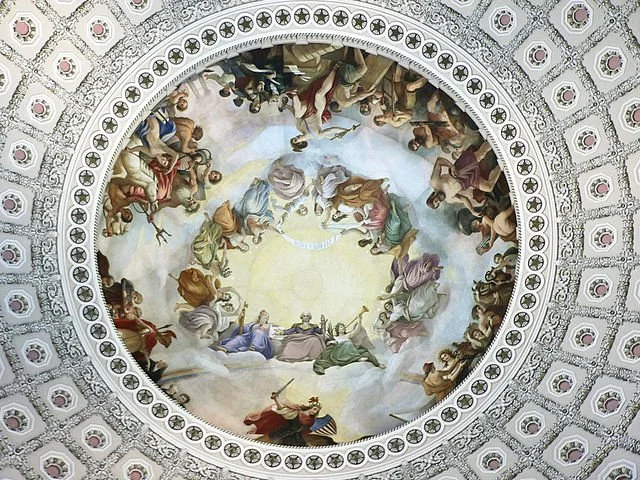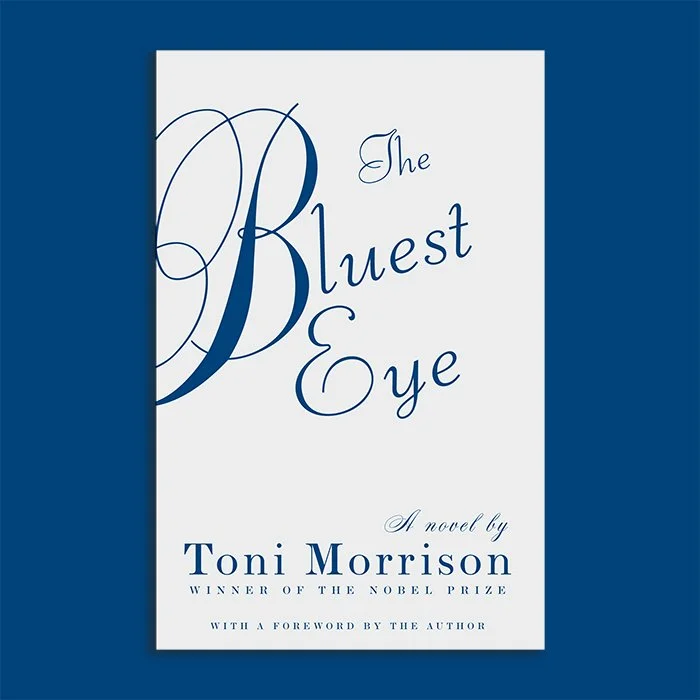The American Constitution grants citizens freedom of speech and freedom of association. Collectively, these rights recognize citizens’ ability to protest the American Government. From the inception of the United States, direct-action protests have been a cornerstone of American democracy. Direct-action protests are so well renowned and embedded into the fabric of American democracy that in-direct protests have failed to gain the same level of traction and immortalization. This essay examines the validity of indirect small-scale resistance when conducted by liturgical (i.e.: Catholic and Episcopalian) and non-liturgical (i.e.: Baptist and Methodist) churches and the historical background that predated resistance modes and church influence during the Civil Rights Movement.
Read MoreIn this analytical and comparative study, I analyze Anna Lapwood’s transcription of Mykola Lysenko’s Prayer for Ukraine (1885) and compare it to John Romano’s recent arrangement for the United States Air Force Band. I further examine the extramusical narratives of cultural identity and highlight this hymn as a symbol of Ukrainian independence. The Ukrainian struggle for independence has lasted for centuries. Present-day Ukraine was formerly ruled by the Romanovs–later the Soviet Union–and the Habsburgs (1760-1991), where many Ukrainians were assimilated into other cultures. The nineteenth century, however, saw a series of revolutionary uprisings. As Paul Kubicek states, “toward the end of the nineteenth century, Ukrainians began to experience an important ‘ideological conversion,’ as the cultural intelligentsia, which had been growing throughout the nineteenth century, abandoned its previous ethnic self-destination as Rusyns, or Ruthenians, and began using a new moniker, Ukrainians.”[1] The rise of the Orthodox Church, the increase of scholarly publications, and the establishment of Ukrainian educational institutions became important vehicles for creating a unified Ukrainian identity.[2] To use Kubicek’s term, this “Ukrainian awakening” would continue to last throughout the twentieth century which saw Ukraine established as a nation–following the dissolution of the Soviet Union in 1991.[3]
Read MoreThrough an examination of modernist depictions of Korean women from 1910-1945, this study will attempt to understand how both Korean and Japanese creators used Korean women’s bodies to construct an ideal Korean identity under occupation. I argue that the visual languages they developed to represent women display a clear link between imperial and nationalist ambitions and the “modern” woman, illustrating how specifically women’s bodies were manipulated within artworks to express sociopolitical ambitions on both sides of the colonial encounter.
Read MoreToward the end of Just Kids, the iconic queer photographer Robert Mapplethorpe, now on his deathbed with AIDS, tells his once partner Patti Smith: “We never had any children.” This yearning for heterosexual parenthood is a strange statement coming from an artist who pushed the boundaries of queer representation in art, invoking the anger of Congress and heterosexual America in the process. In response, Patti Smith shuts Mapplethorpe down, telling him instead “our work was our children.” Smith’s response does two important things. First, it legitimizes artmaking as a worthwhile life pursuit, elevating art to the status of childhood (which, as Lauren Berlant and Michael Warner argue, has achieved the “status of sanctified nationality” in America). Second, this statement reveals a major project of Smith’s memoir—the reimaging of domesticity, the creation of a home centered around art, rather than a nuclear family.
Read MoreNearly thirty years after the French photographer had jettisoned his given last name of Bossu[1]—meaning hunchback in French—in favor of his pseudonym, Charles Marville and his camera haunted the quarters of Victor Hugo’s hunchback of Notre-Dame. From his ambitious and rather apt vantage point, Marville produced a seemingly exultant image of the spire of Notre-Dame-de-Paris within a vast swath of Paris cityscape.
Read MoreWhen immigrants move to the United States, they are searching for a better life than the one they were dealt. What they do not expect are the problems they will experience while doing so — especially problems within themselves. Using my own personal experience with feeling that I didn’t fully belong and representations in Sandra Cisneros’s 1983 novel The House on Mango Street Julia Alvarez’s 1991 novel How the García Girls Lost Their Accent, I will demonstrate how young Hispanic/Latino girls experience identity crises because of their different cultures clashing.
Read MoreOver 150 years have passed since the publication of Louisa May Alcott’s Little Women, yet the same hurdles exist for female authors and authors of color. The powerful, grandiose publishing houses separate this group from its path to success and place them on a rocky road to failure. Writers are struggling to earn a livable salary, authors remain underrepresented, their voices are getting shut down, and they cannot escape hateful comments. Little Women calls attention to the barriers within the publishing industry, both former and present, through the use of Jo March.
Read MoreWhile the American perspective argues that painter John Ferren introduced abstraction to Beirut, contemporaneous Lebanese paintings and mapping data suggest that the city boasted strong cultural foundations prior to the American’s arrival. Rather than attribute Ferren with sparking Beirut’s artistic development, I propose that Beirut’s existing status as a cultural hub within the Middle East rendered it attractive to American diplomatic efforts and shaped Ferren creatively, as revealed by the evolution of his oeuvre following his time abroad.
Read MoreThough living document theorists allow for some “revamping” of the Constitution through interpretation, the core document still remains an authoritative and sometimes oppressive force through interpretative devotion to content. Both the originalist and living constitutionalist interpretative lenses hinder progress and uphold a document that may no longer be fully relevant in its current state. Instead of a new method of interpretation, following the logic proposed by Sontag, the form of the Constitution should be considered. Thus, when issues of this strange new world arise that could not have been envisioned by the founding fathers, we need not guess what their stance would be or twist ancient texts to fit modern needs.
Read MoreTwo lovers are locked in an embrace. The woman folds her swan like neck over her lover, the weight of her body rests atop his. And yet the man appears strangely distracted. He looks away from her, toward a framed painting to his left —a portrait he made of the same woman, still in its early stages. In Raphael and La Fornarina, Jean-Auguste-Dominique Ingres depicts the artist he seeks to emulate the most —Raphael —with his muse, the Fornarina, on his lap. The master and the model become reduced to actors with rigid roles to play: the irresistible seductress and the powerlessly, although distractedly, seduced.
Read MoreItalian artists Alberto Burri and Umberto Boccioni were artists that created modernist art that reflected the overall sentiment of Italian society during their respective times. Although their art was made in two different time periods, as Boccioni created Futurist art under Mussolini’s Fascist regime and Burri created art as a response to the traumas left behind by it, their art represents changes made to Italian society as a result of a political ideology. It is through the complete study of the primary sources from this time that one can understand the integral nature of these works in the overall understanding of the way in which Italy both coped and lived as a result of Mussolini.
Read MoreFilm as a visual medium has been established as one of the most accessible displays of the human condition, nuanced philosophical discussion, and societal examination since its invention at the turn of the twentieth century. Despite its adolescence as a vehicle for narrative, film was, for a time, the most popular storytelling form, surpassing theatrical performances, stage plays, and technical innovations such as FM radio. However, due to the invention of television and its emergence as a separate genre, film has now emerged as one of many alternatives to experiencing moving, visual art. Artists began to utilize this art form to examine the human psyche and the environment from which it was constructed to more complex examinations such as the desire for self-discovery. Gender and sexuality when expressed in this fashion is often[i] used as a foil for this desire and can be utilized to grapple with one’s identity being either outside the norm or accepted at any capacity, the most contentious being identities under the trans hypernym (transsexuality, crossdressing, etc.)
Read MoreCritical reception has failed Mindy Kaling, the writer and creator of several popular TV shows including The Mindy Project (2012–2017), Champions (2018), and Never Have I Ever (2020–now). Though her most recent venture, Never Have I Ever received plenty of praise when it first aired on Netflix in April 2020, critical reception also quickly revealed the viewer’s assumptions that make complex messages written by women of color difficult for audiences to notice.
Read MoreHow white supremacist patriarchy interprets and values the bodies of Black women is one of the key points of Toni Morrison’s The Bluest Eye. The Black body’s value, as suggested by the text, is determined primarily through physical beauty according to a white aesthetic. In the novel, beauty standards for women have explicit ties to race
Read MoreThe European fairy tale tradition began with oral folktales from different regions throughout the continent. Writers like Giambattista Basile (1566 – 1632) of Naples and the German brothers Jacob (1785 – 1863) and Wilhelm (1786 – 1859) Grimm were some of the first to compile stories from Western Europe into anthologies, spreading these folk and fairy tales to a wider audience and bolstering widespread interest in them over the next several centuries.
Read MoreThe Rijksmuseum identifies Dirck’s Jacob Cornelisz Painting his Wife Anna as a commemorative family portrait, which has been the most common interpretation of Dirck’s painting in recent scholarships of the past two decades. In fact, the Renaissance experienced increasing social and cultural practices to commemorate family identity and lineage through various means, including the commemoration of the dead through art production such as portraiture and bust sculpture.
Read MoreWhile the philosophy of religion project requires an outsider perspective, the African American student—as a cultural insider whose religious background lies in the Black Church—examining gospel music cannot always separate personal memories and experiences from their inclination to interpret Mother Ford’s experience as religious or mystical. Having witnessed the frenzied behaviors of individuals singing gospel makes an outsider perspective difficult to attain for those individuals. In this article, I blur the lines of the Durkheimian perspective on the sacred/profane dichotomy to underscore the nuances of reading gospel as religious material.
Read MoreEvgeny Zamyatin’s We (1920–1921) was the first work banned by the Soviet censorship board, Andrei Platonov’s The Foundation Pit (1929–1930) met a similar fate just nine years later, and both writers suffered extreme marginalization afterward. Given this, one wonders why and how they and so many other authors of the period criticized the regime indirectly at all.
Read MoreIn the painting Punishment of a Hunter, the Dutch seventeenth-century artist Paulus Potter depicted animals putting a hunter on trial and enacting a death sentence. In this artwork, the animal court and hunter’s execution by burning appear in two central scenes, surrounded by smaller allegorical and hunting vignettes that show animals and humans. Compared to other works of seventeenth-century Dutch art, the content and format of this painting stand out as being rather peculiar.
Read MoreThe feminine image is a broad conceptualization of feminine identity and behavior and is thus based in archetypical femininity. Archetypical femininity includes the nurturing quality associated with maternity, the chaotic element of nature and transformation, and the display of physical beauty and sexual appeal. Archetypal femininity, though expansive and necessary to the substance of life, becomes an oppressive tool when rigid expectations for gendered behavior arise from it.
Read More





![“The Hispanic [Identity] Challenge”: How Ethnocultural Identities are Challenged by American Society](https://images.squarespace-cdn.com/content/v1/5408aff5e4b03d3eb86890c1/1681913763204-YJ0MLNWXQADJEW6C71SS/house+on+mango+street.jpeg)













